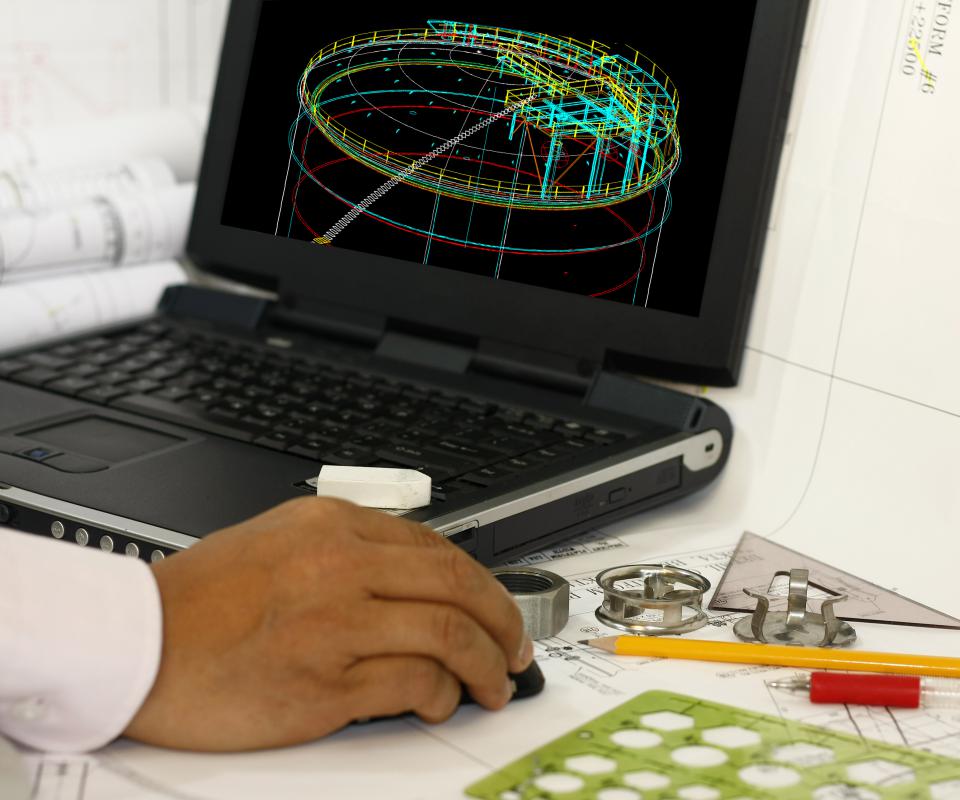At EasyTechJunkie, we're committed to delivering accurate, trustworthy information. Our expert-authored content is rigorously fact-checked and sourced from credible authorities. Discover how we uphold the highest standards in providing you with reliable knowledge.
What is 3D CAD?
Three-dimensional computer aided design, or 3D CAD, is a kind of software that helps architects, engineers, and other construction professionals design schematics for three-dimensional objects. 3D CAD is commonly used in the design of a variety of objects, including automobiles and other vehicles, industrial, commercial or residential buildings, and virtually every category of household device or appliance. 3D CAD is also a crucial tool for creating computer-generated animation.
Computer aided design, or CAD, was developed as a professional field in the 1970s, as a way to lower costs and the time associated with the design and testing phases of product development. It began as a substitute for both paper schematics and clay models, but with ongoing advances in operating systems and computer hardware, has gone a long way towards replacing them as a production tool. This is not to say CAD users no longer require training, however, and modern architects and designers require as much, if not more education and practice to master the latest computer-aided design techniques.

Many of the concepts involved in 3D CAD are the same as those used in traditional paper or clay modeling CAD. Ideas such as geometry, scale, mass, and even biomechanics are all as necessary for modern designers, engineers, and architects to understand as it was for those working in the 1960s. To illustrate this, designing an automobile frame with 3D CAD could be compared to traditional schematic design in the same way that word processing could be likened to hand-writing a letter.
One of the greatest benefits 3D CAD enjoys over paper drafting or clay modeling is the idea of virtualization. That is, a computer model can be edited, adjusted, and even completely reworked with no added cost, other than time spent. All of the work is virtual, displayed dynamically on an electronic screen, and can be revisited and modified ad infinitum. Modern designers can incorporate new ideas and recommendations far more easily than their predecessors, who would have to literally 'go back to the drawing board' and start anew with any changes.
Modern CAD technology has allowed design companies to increase productivity while reducing manpower, as the time needed to complete a single project has decreased dramatically thanks to computerization. In addition, even the costs of 3D CAD itself have gone down considerably over the last three decades. Although previously purpose-built computer systems were needed to run 3D CAD software, it is possible now to create relatively complex designs with fairly basic personal computers. Nevertheless, professional results demand the latest in hardware and software.
AS FEATURED ON:
AS FEATURED ON:











Discuss this Article
Post your comments